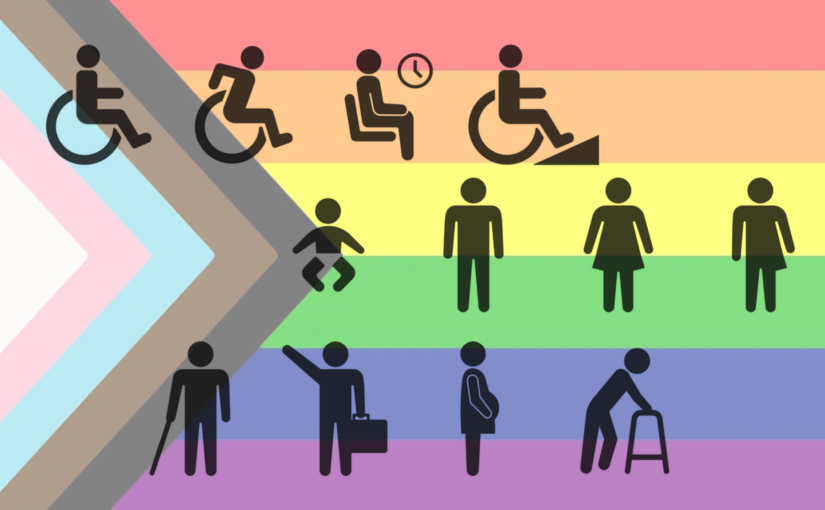Accessibility, Compliance, and Conformance
What does accessibility, compliance, and conformance for digital products and software as a service (SaaS) look like in the age of Diversity, Equity, and Inclusion (DEI)?
Accessibility In Context
There are 318.9 million (2014) people in the United States of America.
- An estimated 48.9 million people, or 19.4% of the non-institutionalized civilians, have a disability.
- An estimated 24.1 million people, or 8.5% have a severe disability.
- An estimated 34.2 million people, or 17.5%, have a functional limitation.
– NSIP, National Service Inclusion Project from the U.S. Census Bureau Survey of Income and Program Participation
As defined in the 1994 Census survey, a person with a severe disability is one who is unable to perform one or more activities of daily living; has one or more specific disabilities; or is a long-term user of assistive devices such as wheelchairs, crutches, and walkers. A person with a
non-severe disability is one who has difficulty performing functional activities such as hearing, seeing, having one’s speech understood, lifting, carrying, climbing stairs and walking; or has difficulty with activities of daily living.
U.S. Department of Justice – Disability Rights Laws
Telecommunications Act
Section 255 and Section 251(a)(2) of the Communications Act of 1934, as amended by the Telecommunications Act of 1996, require manufacturers of telecommunications equipment and providers of telecommunications services to ensure that such equipment and services are accessible to and usable by persons with disabilities, if readily achievable. These amendments ensure that people with disabilities will have access to a broad range of products and services such as telephones, cell phones, pagers, call-waiting, and operator services, that were often inaccessible to many users with disabilities.
Americans with Disabilities Act (ADA)
The ADA prohibits discrimination on the basis of disability in employment, State and local government, public accommodations, commercial facilities, transportation, and telecommunications. It also applies to the United States Congress. Modeled after the Civil Rights Act of 1964, which prohibits discrimination on the basis of race, color, religion, sex, or national origin – and Section 504 of the Rehabilitation Act of 1973 – the ADA is an “equal opportunity” law for people with disabilities.
Rehabilitation Act
The Rehabilitation Act prohibits discrimination on the basis of disability in programs conducted by Federal agencies, in programs receiving Federal financial assistance, in Federal employment, and in the employment practices of Federal contractors. The Rehabilitation Act requires that electronic and information technology developed, procured, maintained, or used by the Federal government be accessible to people with disabilities.
Section 508
Section 508 was originally added to the Rehabilitation Act in 1986; the 1998 amendments significantly expand and strengthen the technology access requirements in Section 508 – the 1986 version established non-binding guidelines for technology accessibility, while the 1998 version called for binding, enforceable standards. In 2000, the Section 508 Standards for Electronic and Information Technology was published in the Federal Register.
World Wide Web Consortium (W3C)
The World Wide Web Consortium (W3C) was founded in 1994 and is an international community that develops open standards to ensure the long-term growth of the Web.
Web Accessibility Initiative (WAI) – 1997
The World Wide Web Consortium (W3C)’s Web Accessibility Initiative (WAI) is an effort to improve the accessibility of the World Wide Web (WWW or web) for people with disabilities. People with disabilities may encounter difficulties when using computers generally, but also on the Web.
Web Content Accessibility Guideline (WCAG) – 1999
In 2008, the World Wide Web Consortium (W3C) published the Web Content Accessibility Guideline (WCAG) 2.0. The WCAG documents explain how to make web content more accessible to people with disabilities. Web “content” generally refers to the information in a web page or web application, including natural information such as text, images, and sounds, as well as code or markup that defines structure and presentation.
- The working group published the Web Content Accessibility Guidelines 1.0 (WCAG 1.0) as W3C Recommendation in 1999, followed by techniques documents in 2000.
- In 2001, the working group started work on WCAG 2.0, which became a W3C Recommendation on 11 December 2008.
- The WCAG announces a plan to develop WCAG 2.1, which builds on but does not supersede WCAG 2.0. We request feedback as early as possible, and by 1 November 2016. (2016-10-12)
Conforming to WCAG 2.0
There are five requirements that must be met in order for content to be classified as ‘conforming’ to WCAG 2.0:
- Conformance Level – one of the following levels of conformance is met in full:
- Level A: For Level A conformance (the minimum level of conformance), the Web page satisfies all the Level A Success Criteria, or a conforming alternate version is provided.
- Level AA: For Level AA conformance, the Web page satisfies all the Level A and Level AA Success Criteria, or a Level AA conforming alternate version is provided.
- Level AAA: For Level AAA conformance, the Web page satisfies all the Level A, Level AA and Level AAA Success Criteria, or a Level AAA conforming alternate version is provided.
- Full pages
This provision simply requires that the whole page conform. Statements about “part of a page conforming” cannot be made. - Complete processes
This provision prevents a Web page that is part of a larger process from being considered conforming if the process overall is not. This would prevent a shopping site from being classified as conforming if the checkout or other features of the site that are part of the shopping and buying process do not conform. - Only Accessibility-Supported Ways of Using Technologies
When new technologies are introduced, two things must happen in order for people using assistive technologies to be able to access them. First, the technologies must be designed in a way that user agents including assistive technologies could access all the information they need to present the content to the user. Secondly, the user agents and assistive technologies may need to be redesigned or modified to be able to actually work with these new technologies. - Non-Interference
This basically says that technologies that are not accessibility supported can be used, as long as all the information is also available using technologies that are accessibility supported and as long as the non-accessibility-supported material does not interfere.

